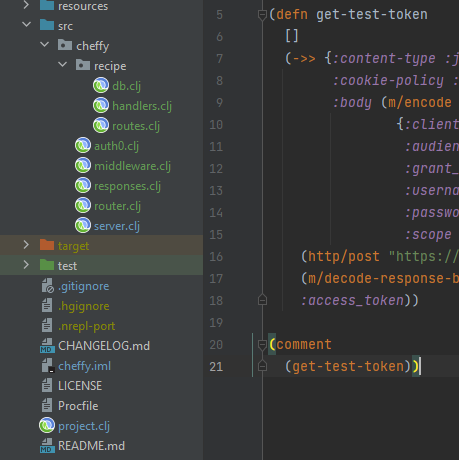Reputation: 17470
Why does leiningen make a directory hierarchy? Can I dispense with it?
If I create a new clojure project with leiningen, it makes a directory tree like so:
.
|-- doc
| `-- intro.md
|-- project.clj
|-- README.md
|-- src
| `-- hello_friend
| `-- core.clj
`-- test
`-- hello_friend
`-- core_test.clj
Often, all I want is a single clojure file, and I want to use leiningen to handle libraries and start a repl.
I've got two questions:
(1) Is is possible to get leiningen to work properly with this structure
.
|-- project.clj
`-- hello.clj
which I'd greatly prefer. (In fact even better would be to have the project.clj as part of the hello.clj file)
(2) Is there any good reason for the deep directory structure? Or is it just a habit from java-land?
Note, this works fine as far as I can see:
project.clj
(defproject generic "0.0.0"
:dependencies
[[org.clojure/clojure "1.4.0"]
[hiccup "1.0.2"]]
:source-paths ["."]
:main two
:repl-options { :port 4001 :init (println "(-main) to run") }
)
one.clj
(ns one
(:use hiccup.core))
(def doom (html [:h1 "doom"]))
two.clj
(ns two
(:require one))
(defn -main []
(println one/doom))
Upvotes: 6
Views: 449
Answers (2)

Reputation: 862
The default src path (deep structure) separates source code from config. With big apps, you also organize multiple namespaces by directory for easy navigation.
Even this initial REST API'd get unwieldly if everything were in the root:

Upvotes: 0
Reputation: 8593
(1) You can specify :source-paths ["."] in your project.clj. See lein sample project for all possible options
(2) You need the "deep" structure once you have 2 namespaces and one requires on the other. See here for an explanation of how namespaces are mapped to files.
Upvotes: 4
Related Questions
- Clojure create directory hierarchy - but not in a procedural way
- Leiningen only runs in one directory
- What do these lein folders do?
- How to omit resources directory when using lein uberjar
- Leiningen compilation order?
- Using a parent directory as a Leiningen dependency?
- Is there a way to regenerate the target directory in leiningen?
- Is there an advantage to layering leiningen projects?
- For a lein project, why is lib/ in .gitignore?
- How can I configure my project.clj so that Leiningen finds my sources under a non-standard directory structure?